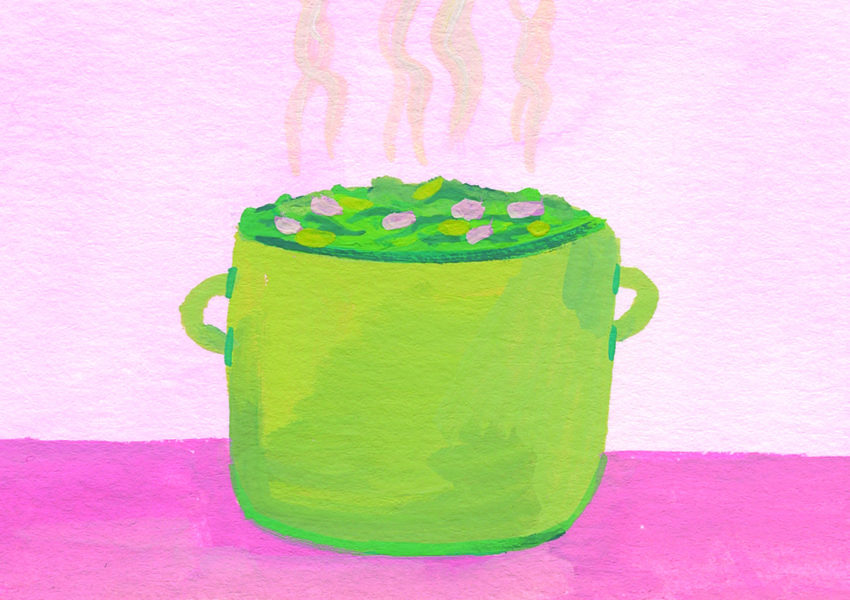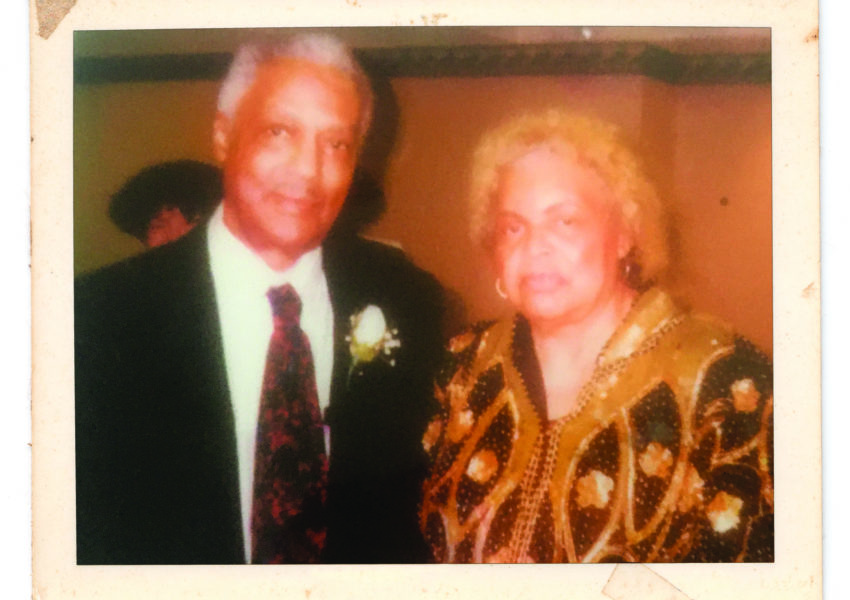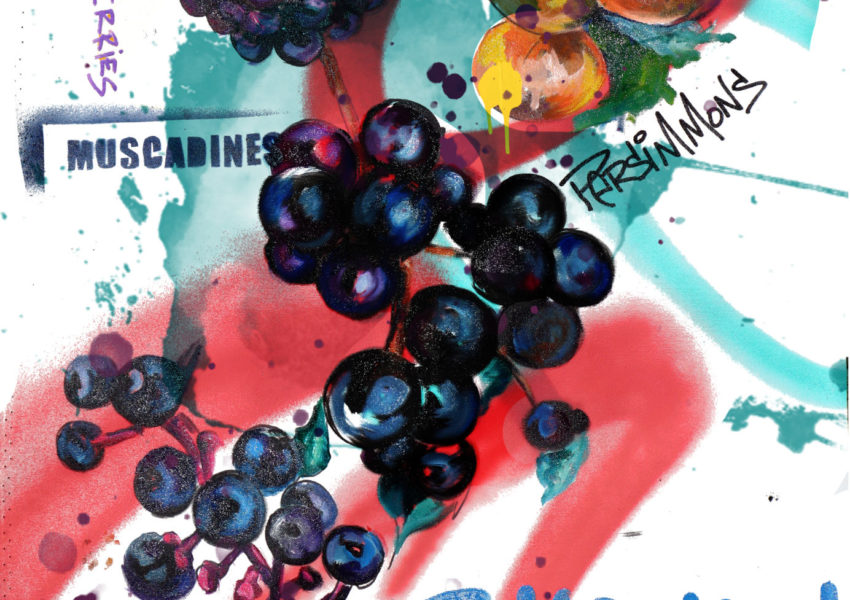Black Tacos In Chicago’s Black neighborhoods, tacos are always in rotation
By Lolly Bowean
Photos by Sandy Noto
I call them “Black tacos”: the combination of a Mexican-style corn tortilla with slow-cooked, highly seasoned meats and other ingredients affiliated with Black cuisine—oxtails, sweet potatoes, fried pork chops, and more.
Chicago’s unique African American population is made up primarily of the descendants of Southern migrants who journeyed to the urban outpost and brought much of their culture and tastes with them. As a result, collard greens, macaroni and cheese, candied yams, grits, fried brains, Hoppin’ John, and cornbread are familiar guests on restaurant menus and home meal plans.
Black Chicagoans have remixed soul food over and over to keep it relevant. There are now recipes that eliminate the ham hocks, fatback, and seasoning salts to make the foods healthier. There are even vegan soul food variations. Fine-dining chefs in some restaurants have elevated the dishes by turning the flavors into foams and by adding richer and exotic ingredients so that the food appeals to a new generation with a posh palate.
But for as often as I eat Black tacos, I almost never read anything about them.
I spent much of my childhood in Queens, New York, and Knoxville, Tennessee. I didn’t grow up eating tacos as a staple food. Taylor Mason, the owner of Taylor’s Tacos, did. She grew up on the West Side of Chicago in the majority African American neighborhood of Lawndale. And like so many Black residents born and raised in this Midwestern city, she developed an affinity for tacos—in part, she told me, because they brought her community together around the table.
“Tacos were always in rotation,” said Mason, who operates Taylor’s Tacos as a catering business and pop-up. “It was an interactive experience. And visually the colors came together, and you’d eat with your eyes first.”
She can still remember the fatty, brown seasoned beef, shredded lettuce, and chopped bright tomatoes scattered across the serving platter.
When Mason went away to California for college, she became even more enamored with tacos as a street food. She found herself shopping around to find stands where the carne asada was cooked right in front of the patrons and served simply on tortillas placed on parchment paper. She returned home and decided to open a business that would combine Mexican American street tacos with African American home cooking.
“It’s the meat that separates ours from authentic Mexican tacos,” Mason explained. “It’s been our experience that Mexicans emphasize salsas. For us, the meat has to be seasoned so you get flavor in every bite, not just in the sauce.”

Just like in many African American households, Mason seasons her meat with a combination of salt, black pepper, cayenne, and garlic powder. The meats are braised for tenderness and flavor.
Mason uses corn tortillas for her tacos so that they are more faithful to the Mexican style, she said. But she prepares them in such a way that the texture resembles that of flour tortillas—the preferred choice of her Black patrons. Taylor’s business is based on the Lower West Side of Chicago, but she pops up all over the city and in nearby suburbs.
“We deep-fry the tortillas, which is Mexican in some aspects…but deep-frying plays a big part in a lot of Black cooking,” she said. “[Tacos] are not traditionally Black, but our preparation is Black: slow-cooked with cayenne and garlic powder, not oregano and chilies…. We braise our meats instead of searing them.”
My affinity for tacos came subtly and quietly. My introduction as a kid was to the mainstream, hard-shell version with bland and greasy ground meat topped with cheese, lettuce, and chopped tomatoes.
Before I came to Chicago, I lived in New Orleans, where beignets and coffee were the late-night snack of choice. During my time in Washington, DC, I remember grabbing fried chicken wing dinners from the local carryout spots.
In Black Chicago, it’s tacos.
It wasn’t until I moved to Chicago nearly twenty years ago that I ate a “real” Mexican taco and began consuming them regularly. On nights out with my friends and colleagues, after drinks and laughs or taking in a show, grabbing tacos was customary. I recall it starting at local late-night taquerias, where the sliced steak and tender chicken were grilled and topped with cilantro and diced onions and served piping hot.
Over time, I was introduced to tacos made with fried chicken, breaded pork chops, and grilled steak marinated in Jamaican jerk sauce. We’d build them up, sometimes adding slices of avocado, grilled onions and peppers, or hot sauces to embolden the flavors.
Chicago is segregated by race and also class, and it shows. The city has the second-largest population of Mexicans in the United States, after Los Angeles. Yet for a city that is almost evenly divided between Black, white, and Latino residents, the majority of white residents live on the North Side. The majority of Black and Latino families live on the South and West Sides in distinct communities that neighbor each other. On the West Side, the historically Black communities of Lawndale and Austin sit right next to the Latino communities of Little Village and Cicero. On the South Side, the primarily Latino neighborhoods Gage Park and Chicago Lawn are bordered by the Black communities of Englewood and Ashburn. Despite the racial divide, taco shops seem to be a universal commonality in nearly every neighborhood here.
For me, an outsider learning the ways of the city, I was delighted by the ways in which my African American neighbors with roots here had seized the taco as their own. New acquaintances would point me to certain restaurants across town. I was often sent to local establishments to try this stand’s fish tacos, that restaurant’s shrimp tacos, or this place’s short-rib version. Many folks boasted that the tacos they made at home were better than any you could buy on the streets. I’d stand in warm kitchens watching home cooks squeeze limes over grilled skirt steak or fried ground lamb before dumping it on a tortilla and handing it over for me to try. The devotion itself intrigued me.
I should note that Chicago isn’t unique in this food coupling. There are Black communities throughout the country where tacos have been filled with black-eyed peas, oxtails, sweet potatoes, and even pot roast. Yet I couldn’t find a definitive history of the Black taco, nor of its crossover into Black Chicago foodways.
Scholars and journalists have chronicled the relationship between Mexican and African American food traditions in Los Angeles, said Jeffrey Pilcher, an author, editor, and professor of food history at the University of Toronto whose scholarship has focused on the history of the taco. But there has been less consideration of that food phenomenon in the Midwest, he told me.
“It’s not at all surprising that in Chicago, where there is a large Black community and Mexican community going back decades, that there are food ties between those two communities. Food customs often get exchanged,” Pilcher said. “It’s very common to have this sort of cross-cultural eating and sharing of food.”

Pilcher pointed to the Mississippi Delta tamale as another example of a Latino food that took on a new identity as it penetrated a new, foreign region many decades ago. Migrant workers likely introduced the tamale to the area, but Black folks there adapted and reworked it. Mississippi tamales are smaller than the traditional Mexican versions, are simmered instead of steamed, and tend to be spicier. For some in that Southern state, they are a menu staple.
With foods, “there’s a constant search for novelty, and then it becomes everyday. For the past fifty years, the taco has been going through this cycle,” Pilcher said. A new generation comes along, and they don’t like their parents’ tacos, so they adjust them. Later, there’s a shift back to the authentic style.
Tacos migrated into the American diet in the early 1900s, Pilcher found. And by the 1950s, what was previously an exotic food had been made commonplace with the help of American processed ingredients, like ground beef and the hard shell. The taco that became mainstream was very different from the original Mexican version.
Those are the tacos I grew up eating sporadically. But in Chicago, for many Black households I’ve encountered, tacos are part of the regular rotation, alongside catfish, roast chicken, meatloaf, and ribs.
According to Chicago historian Shermann “Dilla” Thomas, what I call the “Black taco” is likely just the natural result of the proximity between Latino and Black communities—historically, they tend to be adjacent. And while the invisible boundaries between neighborhoods may have highlighted political differences, factions, and affiliations, that hasn’t stopped anyone from crossing over for a good meal.
“Tacos were my college survival meal,” a jovial Thomas said as he talked about tacos. “Then, it was the celebratory meal. And it’s the first thing I taught my kids to cook.”
“Tacos is not just a part of the [family dinner] menu—it’s on the ten-day menu. You are going to eat tacos at least every ten days,” he said.
On the South Side, Thomas told me, a restaurateur once ran out of bread for his fried chicken sandwiches and decided to serve the meat on tortillas. The idea was a hit with customers, and it stuck. He mentioned another entrepreneur on the West Side whose jerk chicken and steak tacos became the foundation of a successful business.
The unique food marriage between traditional Black flavors on a Mexican staple food demonstrates that the two communities have so much more in common than the differences and tensions that are too often highlighted, Thomas said.
“At the end of the day, we all want the same things,” he said. “To take care of who you need to care for. A lot of that is done in the kitchen with your family. We have learned from each other’s cultures. Protests, community galvanizing, voting in blocks: Latino communities have gotten that from us. With tacos, it has become such a Black staple,” he said.
I love the incidental cultural fusion, not just because of the way the flavors pop on my taste buds, but because I think it symbolizes a blending that can be replicated off the plate.
When I’m at home in Chicago, when anyone asks me if I want to grab tacos, I ask for clarity, “Tacos—or Black tacos?”
To me, either version is a gift.
Lolly Bowean is a journalist based on the South Side of Chicago. Her work has appeared in the Chicago Tribune, The Guardian, Chicago Magazine, Lenny Letter, and Longreads.
SIGN UP FOR THE DIGEST TO RECEIVE GRAVY IN YOUR INBOX.




